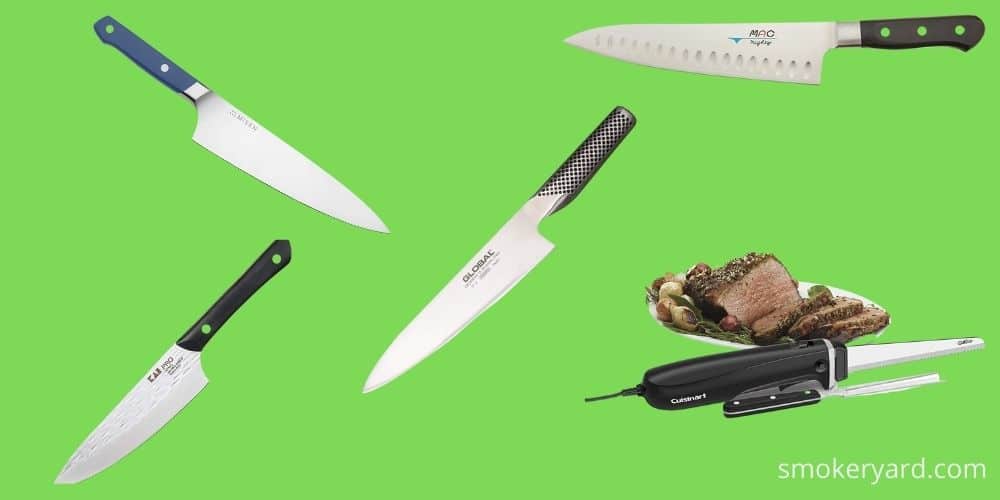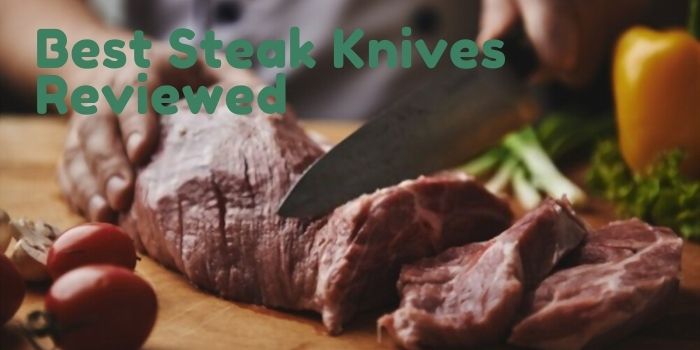Best Chef Knives | Reviews 2022
Knives are the most vital kitchen equipment, but a chef’s knife is crucial. If you are a professional chef stranded on an isolated island with only one item of kitchen equipment, you probably will choose a chef’s knife. You can’t do much slicing, chopping, cutting, or carving without it, so selecting the one you like to hold and use day in and day out is critical to your efficiency and effectiveness as a cook. However, this is a highly subjective task. These professional knives are manufactured of different materials, are of various sizes, have distinct-feeling handles, and are different weights – and none of them is the same. It’s also worth mentioning that pricier does not always imply superior quality. A top chef’s knife can completely change how you regularly prepare meals. If you take excellent care of your chef’s knife and sharpen it regularly, it will last you long, so consider it an investment in your culinary future rather than an impulse purchase.
Chef’s knives are available in various weights, lengths, and handle materials, with the two most common being Japanese and Western (or German) designs. German-style knives tend to be heavier, with thicker blades and more pronounced bellies (the curvature of the blade). This form and weight are ideal for chopping in a rocking motion. Japanese steel knives have narrower blades and are excellent for fine slices, trims, and push-chops. Then there’s the option of having a ceramic or stainless-steel blade. Your chef’s knife should be comfortable, easy to hold, firm, and sharp, as you’ll be using it more than any other blade in your arsenal.
Best Chef Knife in Stainless Steel

The ultralight stainless-steel Global G-2 was finally deemed “the only knife you need” by Strategist contributor Nick Marino, who created this extensively researched and reviewed guide to the best knives of 2018. Deb Perelman of Smitten Kitchen mentioned another noteworthy quality of her favorite knife: “It keeps a sharp edge extremely well,” she said. In our chef’s knife tests, this chef’s knife came out on top. It is proved to be one of the best all-around chef’s reasonably priced knives. This knife’s blade is more robust than the easy-to-chip Mac described below, and it simply feels better in hand.
Best Affordable Chef Knife

This is a good option if you are searching for a cheap one. It’s sharp and powerful, slicing into onions and butternut squash easily. Victorinox knives are known for their Swiss craftsmanship, and this model is a fantastic all-around knife at a reasonable price. It kept its promise of a non-slip ergonomic handle, providing a secure, comfortable grip that makes it an excellent choice for beginners. It cuts through tomatoes, onions, and raw chicken breasts with little to no sticking. We had to push down on the blade to cut the sweet potato in half and apply extra pressure to cut through it. A substantial level of bruising was discovered after the task of chiffonade basil leaves. The Victorinox Fibrox’s tapering knife-edge, honed in two directions, is said to help it keep a sharp edge for longer. However, after finishing the testing method, it was noticed that the knife was notably duller; it was tested by cutting another tomato at the end of the process. It was noted that it didn’t pierce the tomato’s skin as rapidly as when it was out-of-the-box sharp.
Best Chef Knife for Butchering

This durable German-made knife is fashioned from a single piece of robust high-carbon steel. When it comes to activities like slicing a tomato or chiffon zing basil, it felt slightly heavier and more complex to maneuver than the Made-In or Misen chef’s knives. This knife promises to be stained and corrosion-resistant. The S factory edge is not as sharp as our top and runner-up picks. Compared to comparable German knives, the Classic Ikon boasts a smaller blade, a more ergonomic handle, and a more manageable belly curve for improved leverage and control.
The Wüsthof Classic Ikon cut butternut squash and onions neatly in our tests; however, carrots split slightly. When cutting basil, it caused significant bruising, same as the other drop-forged German knives we examined. When peeling the skin from butternut squash, this Wüsthof knife is less elegant and sharp than the Mac Mighty MTH-80.
Best Chef’s Knife for Beginners

Mosen is a favorite of Strauss. When he recommended their knife set, he explained why: “Steel hardness is something knife nerds talk about,” he adds. “This is on the harder end of bendy, which means it sharpens nicely but isn’t so rigid that you can feel it and possibly break it if you move it around erratically.” That amount of stiffness, in his opinion, is the right sweet spot, and as a result, he suggests this knife to almost anyone wishing to upgrade from their old big-box-store model. “I know a handful of pro cooks who use them,” he says, adding that they are not simply suitable for beginners. It’s a fantastic value at $75 for someone looking to invest in their first excellent knife without going crazy and damaging their blades. “You don’t need to be too precious with these knives,” he explains, “but they’re still beautifully built.” “I have six.”
Best Chef Knife for Cutting Vegetables

Though many of the other options they give might easily be argued in favor of, this option offers the most delicate balance between cost and performance.
Like other Japanese blades, this knife is thin and light, weighing about 171 grams, around five to ten grams more than the Misono alternatives. The Mac knives, unlike most other Japanese knives, are claimed to have a symmetrical edge, which means the blades should function equally well for left and right-handed users, which can be a massive bonus in terms of sharpening quickly for people who aren’t as competent. It’s instrumental in home kitchens because both righties and lefties may use the same knives.
Best Chef Electric Knife

Cuisinart’s electric knife is Amazon’s Choice, and it performed admirably in our lab testing. It is particularly good at slicing through the skin of BBQ and roasted meat and tomatoes without ripping them. It also cuts through crusty sourdough with ease. The knife is delivered with a cutting board and a storage tray for the base, blade, and carving fork.
The knife is simple to use, but you must first toggle a sliding lock before you can begin cutting. Two blade-release buttons are squeezed from the handle’s sides, which eliminates any potential for confusion with the trigger (which means there are no chances of the blade releasing while cutting). This electric knife performed admirably on both meat and bread, and we enjoyed the sturdy edge. It’s easy to grasp because it features a safety lock and a trigger release.
All of the features it came with, however, didn’t justify the increased price point for us at close to $50″ The cutting board and fork are items you already have in your drawer, and while they’re great as a gift set, but not always required,” Samantha explains. Overall, an excellent electric knife, although at nearly $50, we expected more in terms of performance rather than frills. The knife is turned off when a simple trigger releases the trigger on/off switch. When slid below to storage, the power handle, blade, and fork.
Final Thoughts
A chef’s knife should be able to handle a variety of kitchen activities. You’ll want to make sure the handle is pleasant to hold and that your d isn’t slick. A stainless-steel blade with a high carbon ratio can resist rust and corrosion and keep its sharpness for a prolonged time. These are among the essential characteristics we look for when choosing the best chef’s knife. Whether professional or amateur, a good chef’s knife is a vital instrument in any cook’armoury. I propose that you get a decent one and maintain it properly. Consider the best blade storage alternatives after finding the greatest one for you.







